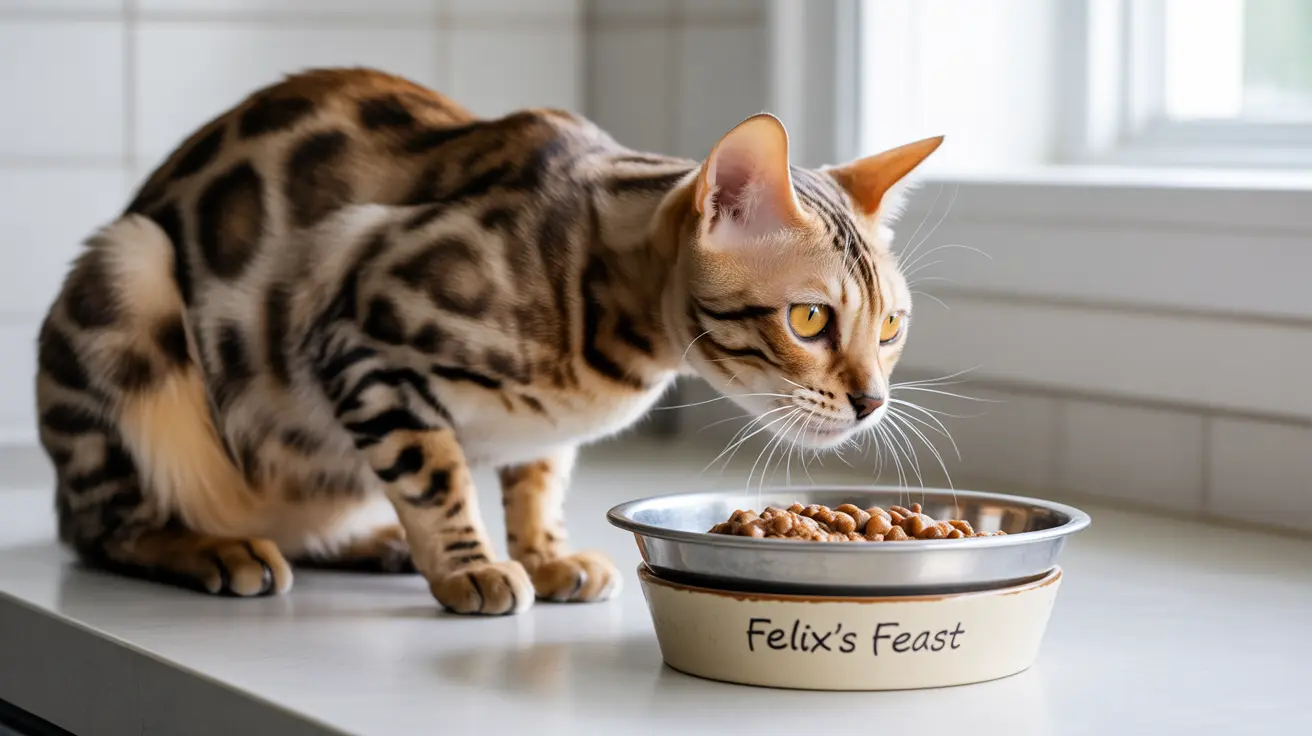If you've noticed your cat rarely drinks from their water bowl but happily devours wet food, you're not alone. This common behavior often concerns pet parents, but understanding the science behind feline hydration can help put your mind at ease. Let's explore why this happens and when you should actually be concerned about your cat's drinking habits.
Cats are uniquely adapted to get most of their hydration needs met through their food. In fact, their wild ancestors evolved in desert environments, developing highly efficient water conservation mechanisms and the ability to obtain most of their moisture from prey.
Understanding Wet Food's Role in Cat Hydration
Commercial wet cat food typically contains 70-80% water, closely mimicking the natural moisture content found in cats' wild prey. When your cat consumes a standard 6-ounce can of wet food, they're actually ingesting about 4-5 ounces of water along with their meal.
This significant moisture content often means cats eating primarily wet food naturally drink less water from bowls or other sources. Their bodies are efficiently managing their hydration needs through their diet alone.
Signs Your Cat Is Getting Enough Water
Even if your cat rarely visits the water bowl, several indicators can confirm they're properly hydrated:
- Moist, pink gums
- Elastic skin that quickly returns when gently pinched
- Regular urination with good-sized clumps in the litter box
- Bright, alert eyes
- Normal energy levels
- Well-groomed, healthy coat
When to Monitor Water Intake More Closely
While it's typically normal for cats on wet food diets to drink less water, certain situations warrant closer attention:
Medical Conditions That Affect Hydration
- Kidney disease
- Diabetes
- Hyperthyroidism
- Urinary tract infections
- Dental problems
Environmental Factors
- Hot weather
- Increased activity
- Stress or anxiety
- Recent diet changes
- New medications
Ways to Encourage Water Consumption
If you're concerned about your cat's hydration, try these vet-recommended strategies:
- Place multiple water bowls throughout your home
- Use ceramic or stainless steel bowls instead of plastic
- Consider a pet water fountain
- Keep water bowls away from food dishes
- Ensure water is fresh and clean daily
- Add ice cubes to make water more interesting
Frequently Asked Questions
Why does my cat eat wet food but rarely drink water from a bowl?
Cats eating wet food often drink less water because they're getting sufficient hydration from their food, which contains 70-80% moisture. This natural behavior reflects their evolutionary adaptation to obtain water primarily through their prey.
Is wet cat food enough to keep my cat properly hydrated?
Yes, wet food typically provides adequate hydration for most cats. A cat eating primarily wet food can receive up to 80% of their daily water requirements through their food alone.
What are the signs that my cat might be dehydrated despite eating wet food?
Watch for symptoms like sunken eyes, dry or sticky gums, reduced skin elasticity, lethargy, decreased urination, or constipation. If you notice these signs, consult your veterinarian promptly.
How can I encourage my cat to drink more water if they prefer wet food?
Try using pet fountains, multiple water bowls in different locations, or adding low-sodium broth to water. Ensure bowls are clean and placed away from food dishes.
When should I be concerned about my cat's water intake and see a vet?
Seek veterinary care if you notice sudden changes in drinking habits, signs of dehydration, excessive thirst, or changes in urination patterns, even if your cat eats wet food regularly.
Conclusion
While it may seem concerning when your cat doesn't drink much water, their wet food diet typically provides adequate hydration. However, always monitor their health and behavior for any concerning changes, and maintain regular veterinary check-ups to ensure their continued well-being.






